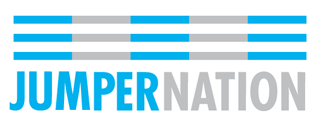Do you sanitize your wash rack regularly? It’s somewhat counter-intuitive to consider because, after all, it’s lathered in soap all day. Unfortunately, it’s also lathered in all sorts of other little hazards, a few thoughtful steps every couple of weeks will keep your horse happier and healthier in the long run. (For example, did you know that stallions and geldings can get a life -threatening infection from having their sheath cleaned in even mildly unsanitary conditions?)
The American Association of Equine Practitioners has an incredibly useful guide for anyone who handles horses on proper biosecurity measures, and they outline precisely the best method for sanitizing a wash rack regularly.
Prior to Cleaning
1. Rubber boots, coveralls, goggles and gloves are to be worn by cleaning personnel.
2. Completely strip area of tools, buckets, and products.
3. Brush down all walls of cobwebs and other residual material with a broom or stiff brush.
For Wash Racks with Non-porous Walls and Floors:
1. Wet down all surfaces — walls, ceilings, ledges (top of walls) — with detergent and water. Powdered laundry detergent can be used; some veterinary disinfectants also have a detergent incorporated in the mix.
2. Allow 5-10 minutes for the liquid to soften caked-on organic material then scrub surfaces with a stiff-bristled broom to loosen all material.
3. Rinse, beginning at the top of walls and from walls towards the drain. Repeat until surfaces are clean, including corners, ledges and drains. NOTE: Do not use power washers set at >120 psi which can aerosolize pathogens. A garden hose with a regular nozzle can be used.
4. Squeegee excess water off surfaces, or allow them to dry.
5. Apply disinfectant prepared according to label directions on n surfaces, starting at the top of stall walls and working from the far end of the stall to the exit. Allow to dry.
6. Repeat step #5 if suspect or confirmed difficult organisms are found or suspected.
7. Follow all label instructions for application and safety precautions.
8. Wash and rinse all your tools, containers, and products before putting them back in the wash rack.
For disinfecting, you can use bleach, white vinegar, tea tree oil, or hydrogen peroxide in recommended concentrations according to the labeling. (You should be advised though that according to EPA guidelines, white vinegar does not kill the dangerous staphylococcus bacteria, so it may be worth upgrading to a more powerful option occasionally throughout the year, especially if you’re treating wounds regularly in your wash rack.)
And don’t forget, NEVER mix bleach and ammonia, or you will poison yourself and your horses and never get to enjoy your new clean wash rack!
Go spring cleaning, then Go Jumping!
The horse that matters to you matters to us®.
The horse supplements from Kentucky Performance Products, LLC provide solutions to the specific challenges facing your horse.
You can count on Kentucky Performance Products to provide affordable, high-quality, research-proven products that carry a 100% satisfaction guarantee.
Not sure which horse supplement best meets your horse’s needs? We are here to help. Contact us at 859-873-2974 or visit our website at KPPusa.com.
Interested in e-facts about equine nutrition and horse health information? Click here to sign up for KPP’s Nutritional Minute:http://eepurl.com/cMPw.

